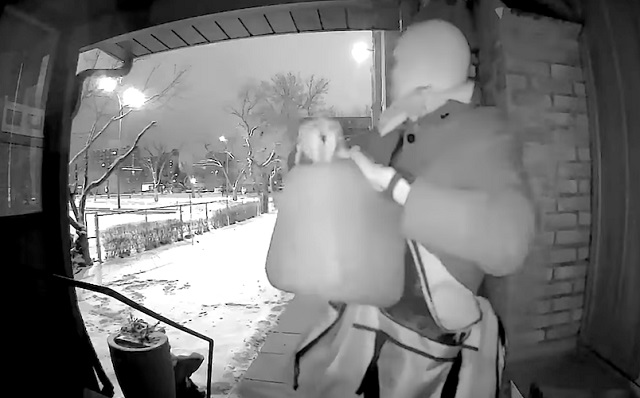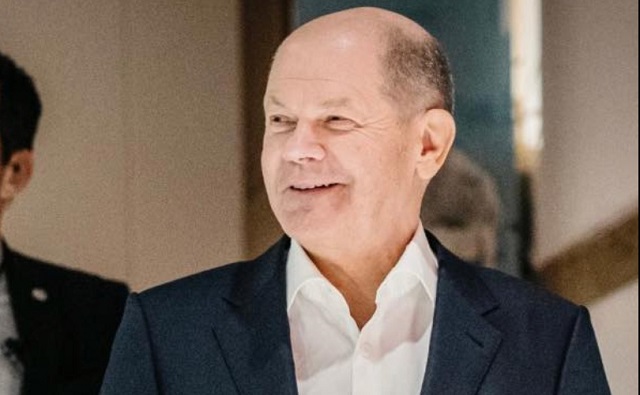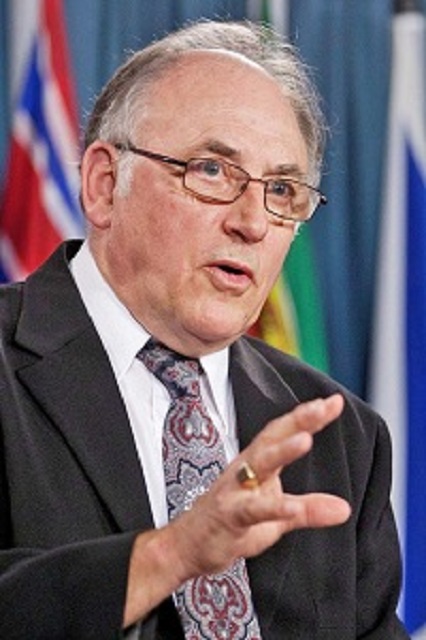Brownstone Institute
Trust “The Science”?

From the Brownstone Institute
BY
Thanksgiving weekend came and went in 2021. The soothsayers of Team Apocalypse were wrong again—the sky didn’t fall. Whole populations of families who dared to get together to celebrate were not wiped out. But that didn’t stop NIAID Director Dr. Anthony Fauci. The Covid fatality rate doesn’t hold a candle to the risk of standing between Dr. Fauci and a camera. After a few softball questions the television host of CBS’s Face the Nation asked Dr. Fauci about recent criticism of him from various corners. He replied:
So, it’s easy to criticize, but they’re really criticizing science because I represent science. That’s dangerous. To me, that’s more dangerous than the slings and the arrows that get thrown at me. I’m not going to be around here forever, but science is going to be here forever. And if you damage science, you are doing something very detrimental to society long after I leave. And that’s what I worry about.[i]
It is indeed dangerous to claim to represent science. Science doesn’t need sales reps, since it is the conceptualization of physical reality itself as determined by experiment and data. What Fauci truly represented is the authoritarian State with a capital “S.”
Emails released through the Freedom of Information Act show Fauci to be a manipulative man of politics, deftly brushing off lengthy diatribes against him or mustering forces to push back on Team Reality. It really is quite the position to be in as the highest paid federal employee in history to call upon the systematic enterprise of knowledge known as “science” to shield you from criticism.[ii]
The damage wrought upon our science as an actual institution is incalculable. As Dr. Jay Bhattacharya noted: “The current generation of top public health leaders will need to step down before trust is restored.”[iii]
The science is not what they say it is and you are not required to acquiesce to anyone’s determinations but your own. Indeed, when someone declares themselves to be the voice of authority in all things—run.
Science and the Application of Science Are Not the Same Thing
One keen realization our society must grapple with is separating the science from the application of that science. The science may indeed dictate that we experienced the spread of a highly transmissible deadly viral aerosolized respiratory pathogen, but it does not follow that you need to lose your job after that. Or that we ought to destroy the economy of a country. Or deprive a generation of children of proper learning.
Dr. Scott Atlas was lambasted by Team Apocalypse again and again for not being a virologist, but he was not sent to the White House to fix “the science”—he was there to fix the policy. Indeed, Dr. Atlas had keen and deep expertise in the application of science to public policy, something Dr. Fauci has failed at again and again in his career.
Our Constitution affords US citizens many enumerated rights and protections in our pursuit of happiness. Many of these endowed freedoms are couched in language specifically protecting us from the government writ large. While courts might attest to some extreme event placing some of these rights into dormancy, it did not give Dr. Fauci the right to put our rights, indeed our whole Constitution, into a coma.
The Institutions Lie. And Lie. And Lie.
Myriad once-trusted institutions have suffered greatly under the boom which Dr. Fauci and company lowered onto the American people and, frankly, the world.
The CDC has lost immense trust on all sides. From Dr. Redfield’s declaration that masks are better than vaccines to Dr. Walensky selling you a non-sterilizing sterilizing vaccine—this institution has wreaked the greatest havoc over the entire pandemic. They manipulated data, hid data, ignored data, invented data, deleted data, dismissed data, and all around succumbed to political pressure. Whether it was from teachers’ unions or a meddling White House, the CDC failed to provide any real leadership. With a budget of billions and over twenty thousand employees the amount of work they produced was puny and questionable at every step.
The National Institute of Health (NIH) is another behemoth that needs a thorough cleaning. Their (now) former director, Francis Collins, penned the infamous email calling out the signers of the Great Barrington Declaration.
“This proposal from the three fringe epidemiologists . . . seems to be getting a lot of attention—and even a co-signature from Nobel Prize winner Mike Leavitt at Stanford. There needs to be a quick and devastating published take down of its premises,” Collins ends the email: “Is it underway?”[iv]
If it wasn’t, the establishment institutional heads got in gear and made sure to jumpstart the process of attempting to destroy the reputations of the signers, all manifestly qualified and fantastically credentialled scientists and doctors.
The National Institute of Allergy and Infectious Diseases (NIAID) headed by Dr. Fauci is one of the key culprits stalling any real progress on trust and communication around these vital topics. Fauci and Collins are keenly involved with all areas of research in this federal healthcare monstrosity and influence millions of dollars in grants given every year. No wonder the spectrum of literature produced here did little to further any alternate views on lockdowns, masking, vaccines, and other COVID-19 implementations. The folks setting the policy also hold the purse strings.
It was obvious from the get-go that the structure of our county-centric administration of health policy was going to be problematic. These local health directors and advisors have little if any accountability. They are unelected bureaucrats and were given immense powers over the lives of citizens in their areas. The replete inconsistency with how federal health policy and information was conveyed to the public is an embarrassment. These county entities were given massive outlays of taxpayer dollars for the fruitless effort of contact tracing. The impact was not just on our wallets. As Jay Bhattacharya noted: “Hospital staffing shortages are at least in part due to rigidly enforced vaccine mandates and to mass asymptomatic testing and contact tracing. How many more people must suffer because of the monomaniacal focus on COVID at the expense of public health?” Contact tracing at the county level became a de facto quarantine machine, especially for students.
Most did it, many of us knowing it was pointless. But the pointlessness became the point. Comply, or you are a bad person. Comply or it’s no more school for you.
And comply many people did, thinking they would weather the madness, counting the cost on their hearts and spirits as worth the sacrifice for their children’s education. One more stricture, and the schools will open. Follow one more edict and the playground tape will come off. And so it went for two plus years. So it still goes in many places. We were duped, but we also duped ourselves.
Public Trust Was Destroyed
The impact on the public trust is massive. Curiously, after the 2009 H1N1 debacle, an article was published on the NIH website entitled: “’Listen to the People:’ Public Deliberation About Social Distancing Measures in a Pandemic”[v] The article notes the vital need for good and honest communication to the public about measures being taken the protect the citizenry. It notes: “Public engagement in ethically laden pandemic planning decisions may be important for transparency, creating public trust, improving compliance with public health orders, and ultimately, contributing to just outcomes.”
Ya’ think? This is something at which Fauci and company dramatically failed. At one point, early in the pandemic, Fauci advised against face masks but later admitted he was telling this “noble lie” to slow the impact on material needs and hospital settings. Honesty was a not a key feature of this pandemic.
The report continues: “We conducted focus groups with members of the public to characterize public perceptions about social distancing measures likely to be implemented during a pandemic. Participants expressed concerns about job security and economic strain on families if businesses or school closures are prolonged. They shared opposition to closure of religious organizations, citing the need for shared support and worship during times of crises.”
It was all right there. It is on the website of the National Institute of Health.
They ignored all of it.
The report concludes: “Social distancing measures may be challenging to implement and sustain due to strains on family resources and lack of trust in government.”
What a stark and terrible reminder that the institutions which prized themselves on public health damaged the public more than anything else. Your trust should be in the bedrock of our Constitution, not in some self-endowed title of “Science.”
Reprinted from the author’s Substack
Brownstone Institute
A Coup Without Firing a Shot

From the Brownstone Institute
BY
We all have a different starting place and journey but each of us has the following in common. We’ve realized that official sources, the ones we’ve trusted in the past, are not going to make any sense of the above for us. We have to seek out alternatives and put the story together ourselves. And this we must do because the only other choice is to accept that all of the above consists of a random series of disconnected and pointless events, which is surely not true.
The last few years can be tracked at two levels: the physical reality around us and the realm of the intellectual, mental, and psychological.
The first level has presented a chaotic narrative of the previously unthinkable. A killer virus that turned out to be what many people said it was in February 2020: a bad flu with a known demographic risk best treated with known therapeutics. But that template and the ensuing campaign of fear and emergency rule gave rise to astonishing changes in our lives.
Social functioning was wholly upended as schools, businesses, churches, and travel were ended by force. The entire population of the world was told to mask up, despite vast evidence that doing so achieved nothing in terms of stopping a respiratory virus.
That was followed by a breathtaking propaganda campaign for a shot that failed to live up to its promise. The cure for the disease itself caused tremendous damage to health including death, a subject about which everyone cared intensely before the shot and then strangely forgot about after.
Protests against the goings-on were met with media smears, shutdowns, and even the cancellation of bank accounts. However, and simultaneously, other forms of protest were encouraged, insofar as they were motivated by a more proper political agenda against structural injustices in the old system of law and order. That was a strange confluence of events, to say the least.
In the midst of this, which was wild enough, came new forms of surveillance, censorship, corporate consolidation, an explosion of government spending and power, rampant and global inflation, and hot wars from long-running border conflicts in two crucial regions.
The old Declarations of rules on the Internet put free speech as a first principle. Today, the hosting website of the most famous one, signed by Amnesty International and the ACLU, is gone, almost as if it never existed. In 2022, it came to be replaced by a White House Declaration on the Future of the Internet, that extols stakeholder control as the central principle.
All the while, once-trusted sources of information – media, academia, think tanks – have steadfastly refused to report and respond in truthful ways, leading to a further loss of public trust not just in government and politics but also in everything else, including corporate tech and all the higher order sectors of the culture.
Also part of this has been a political crisis in many nations, including the use of sketchy election strategies justified by epidemiologic emergency: the only safe way to vote (said the CDC) is absentee via the mails. Here we find one of many overlapping parallels to a scenario hardly ever imagined: infectious disease deployed as a cover for political manipulation.
Crucially and ominously, all of these mind-blowing developments took place in roughly similar ways the world over, and with the same language and model. Everywhere people were told “We are all in this together,” and that social distancing, masking, and vaxxing was the correct way out. Media was also censored everywhere, while anti-lockdown protestors (or even those who simply wanted to worship together in peace) were treated not as dissidents to be tolerated but irresponsible spreaders of disease.
Can we really pretend that all of this is normal, much less justified? The exhortation we receive daily is that we can and must.
Really? At what point did you realize that you had to start thinking for yourself?
We all have a different starting place and journey but each of us has the following in common. We’ve realized that official sources, the ones we’ve trusted in the past, are not going to make any sense of the above for us. We have to seek out alternatives and put the story together ourselves. And this we must do because the only other choice is to accept that all of the above consists of a random series of disconnected and pointless events, which is surely not true.
That leads to the second layer of comprehension; the intellectual, mental, and psychological. Here is where we find the real drama and incalculable difficulties.
At the dawn of lockdowns, what appeared to be a primitive public health error seemed to be taking place. It seemed like some scientists at the top, who gained an implausible amount of influence over government policy, had forgotten about natural immunity and were under the impression that it was good for health to stay home, be personally isolated, avoid exercise, and eat only takeout food. Surely such preposterous advice would be revealed soon as the nonsense it was.
How in the world could they be so stupid? How did they gain so much influence, not just nationally but all over the world? Did the whole of humanity suddenly forget about all known science in every field from virology to economics to psychology?
As time went on, more and more anomalies appeared that made that judgment seem naïve. As it turns out, what was actually taking place had something to do with a move on the part of security and intelligence services. It was they who were given rule-making authority on March 13, 2020, and that’s why so much of what we needed to know was and is considered classified.
There were early initial reports that the virus itself might have been leaked from a US-backed lab in Wuhan, which introduces the entire subject of the US bioweapons program. This is a very deep rabbit hole itself, thoroughly exposed in Robert F. Kennedy, Jr.’s The Wuhan Cover-Up. There was a reason that topic was censored: it was all true. And as it turns out, the vaccine itself was able to bypass the normal approval process by slipping through under the cover of emergency. In effect, it came pre-approved by the military.
As the evidence continues to roll in, more and more rabbit holes appear, thousands of them. Each has a name: Pharma, CCP, WHO, Big Tech, Big Media, CBDCs, WEF, Deep State, Great Reset, Censorship, FTX, CISA, EVs, Climate Change, DEI, BlackRock, and many more besides. Each of these subject areas has threads or thousands of them, each connecting to more and to each other. At this point, it is simply not possible for a single person to follow it all.
To those of us who have been steeped in following the revelations day by day, and trying to keep up with putting them together into a coherent model of what happened to us, and what is still going on, the ominous reality is that the traditional understanding of rights, liberties, law, business, media, and science were dramatically overthrown in the course of just a few months and years.
Nothing operates today as it did in 2019. It’s not just that functioning broke. It was broken and then replaced. And the surreptitious coup d’état with no shots fired is still ongoing, even if that is not the headline.
Of this fact, many of us today are certain. But how common is this knowledge? Is it a vague intuition held by many members of the public or is it known in more detail? There are no reliable polls. We are left to guess. If any of us in 2019 believed we had our finger on the pulse of the national mood or public opinion generally, we certainly do not anymore.
Nor do we have access to the inner workings of government at the highest levels, much less the conversations going on among the winners of our age, the well-connected ruling elites who seemed to have gamed the entire system for their own benefit.
It’s so much easier to regard the whole thing as a giant confusion or accident on grounds that only cranks and crazies believe in conspiracy theories. The trouble with that outlook is that it posits something even more implausible; that something this gigantic, far-reaching, and dramatic could have happened with no real intentionality or purpose or that it all fell together as a huge accident.
Brownstone Institute has published more than 2,000 articles and 10 books exploring all over the above topics. Other venues and friends are out there helping us with this research and discovery, issue by issue. Even so, a great deal of responsibility falls on this one institution, the main work of which is providing support for dissident and displaced voices, which is implausible since it was only founded three years ago. We are deeply grateful for our supporters and would welcome you to join them.
As for the intellectuals we once revered for their curiosity and wisdom, most seem to have gone into hiding, either unable to adapt to the new realities or just unwilling to risk their careers by exploring hard topics. It’s understandable but still tragic. Most are happy to pretend like nothing happened or celebrate the change as nothing but progress. As for journalists, the New York Times publishes daily commentaries dismissing the Constitution as a dated anachronism that has to go and no one thinks much about it.
There is a lot to sort out. So much has changed so quickly. No sooner than the dust seems to be settling from one upheaval, there is another and then another. Keeping up with it all causes a level of psychological brain scramble on a scale we’ve never previously experienced.
It’s easier to wait for the historians to tell the next generation what happened. But maybe, just maybe, by stepping up and telling the story as we see it in real time, we can make a difference in stopping this madness and restoring some sane and normal freedom back to the world.
Brownstone Institute
Is the Overton Window Real, Imagined, or Constructed?

From the Brownstone Institute
BY
Ideas move from Unthinkable to Radical to Acceptable to Sensible to Popular to become Policy.
The concept of the Overton window caught on in professional culture, particularly those seeking to nudge public opinion, because it taps into a certain sense that we all know is there. There are things you can say and things you cannot say, not because there are speech controls (though there are) but because holding certain views makes you anathema and dismissable. This leads to less influence and effectiveness.
The Overton window is a way of mapping sayable opinions. The goal of advocacy is to stay within the window while moving it just ever so much. For example, if you are writing about monetary policy, you should say that the Fed should not immediately reduce rates for fear of igniting inflation. You can really think that the Fed should be abolished but saying that is inconsistent with the demands of polite society.
That’s only one example of a million.
To notice and comply with the Overton window is not the same as merely favoring incremental change over dramatic reform. There is not and should never be an issue with marginal change. That’s not what is at stake.
To be aware of the Overton window, and fit within it, means to curate your own advocacy. You should do so in a way that is designed to comply with a structure of opinion that is pre-existing as a kind of template we are all given. It means to craft a strategy specifically designed to game the system, which is said to operate according to acceptable and unacceptable opinionizing.
In every area of social, economic, and political life, we find a form of compliance with strategic considerations seemingly dictated by this Window. There is no sense in spouting off opinions that offend or trigger people because they will just dismiss you as not credible. But if you keep your eye on the Window – as if you can know it, see it, manage it – you might succeed in expanding it a bit here and there and thereby achieve your goals eventually.
The mission here is always to let considerations of strategy run alongside – perhaps even ultimately prevail in the short run – over issues of principle and truth, all in the interest of being not merely right but also effective. Everyone in the business of affecting public opinion does this, all in compliance with the perception of the existence of this Window.
Tellingly, the whole idea grows out of think tank culture, which puts a premium on effectiveness and metrics as a means of institutional funding. The concept was named for Joseph Overton, who worked at the Mackinac Center for Public Policy in Michigan. He found that it was useless in his work to advocate for positions that he could not recruit politicians to say from the legislative floor or on the campaign trail. By crafting policy ideas that fit within the prevailing media and political culture, however, he saw some successes about which he and his team could brag to the donor base.
This experience led him to a more general theory that was later codified by his colleague Joseph Lehman, and then elaborated upon by Joshua Treviño, who postulated degrees of acceptability. Ideas move from Unthinkable to Radical to Acceptable to Sensible to Popular to become Policy. A wise intellectual shepherd will manage this transition carefully from one stage to the next until victory and then take on a new issue.
The core intuition here is rather obvious. It probably achieves little in life to go around screaming some radical slogan about what all politicians should do if there is no practical means to achieve it and zero chance of it happening. But writing well-thought-out position papers with citations backed by large books by Ivy League authors and pushing for changes on the margin that keep politicians out of trouble with the media might move the Window slightly and eventually enough to make a difference.
Beyond that example, which surely does tap into some evidence in this or that case, how true is this analysis?
First, the theory of the Overton window presumes a smooth connection between public opinion and political outcomes. During most of my life, that seemed to be the case or, at least, we imagined it to be the case. Today this is gravely in question. Politicians do things daily and hourly that are opposed by their constituents – fund foreign aid and wars for example – but they do it anyway due to well-organized pressure groups that operate outside public awareness. That’s true many times over with the administrative and deep layers of the state.
In most countries, states and elites that run them operate without the consent of the governed. No one likes the surveillance and censorial state but they are growing regardless, and nothing about shifts in public opinion seem to make any difference. It’s surely true that there comes a point when state managers pull back on their schemes for fear of public backlash but when that happens or where, or when and how, wholly depends on the circumstances of time and place.
Second, the Overton window presumes there is something organic about the way the Window is shaped and moves. That is probably not entirely true either. Revelations of our own time show just how involved are major state actors in media and tech, even to the point of dictating the structure and parameters of opinions held in the public, all in the interest of controlling the culture of belief in the population.
I had read Manufacturing Consent (Noam Chomsky and Edward Herman; full text here) when it came out in 1988 and found it compelling. It was entirely believable that deep ruling class interests were more involved than we know about what we are supposed to think about foreign-policy matters and national emergencies, and, further, entirely plausible that major media outlets would reflect these views as a matter of seeking to fit in and ride the wave of change.
What I had not understood was just how far-reaching this effort to manufacture consent is in real life. What illustrates this perfectly has been media and censorship over the pandemic years in which nearly all official channels of opinion have very strictly reflected and enforced the cranky views of a tiny elite. Honestly, how many actual people in the US were behind the lockdowns policy in terms of theory and action? Probably fewer than 1,000. Probably closer to 100.
But thanks to the work of the Censorship Industrial Complex, an industry built of dozens of agencies and thousands of third-party cutouts including universities, we were led to believe that lockdowns and closures were just the way things are done. Vast amounts of the propaganda we endured was top down and wholly manufactured.
Third, the lockdown experience demonstrates that there is nothing necessarily slow and evolutionary about the movement of the Window. In February 2020, mainstream public health was warning against travel restrictions, quarantines, business closures, and the stigmatization of the sick. A mere 30 days later, all these policies became acceptable and even mandatory belief. Not even Orwell imagined such a dramatic and sudden shift was possible!
The Window didn’t just move. It dramatically shifted from one side of the room to the other, with all the top players against saying the right thing at the right time, and then finding themselves in the awkward position of having to publicly contradict what they had said only weeks earlier. The excuse was that “the science changed” but that is completely untrue and an obvious cover for what was really just a craven attempt to chase what the powerful were saying and doing.
It was the same with the vaccine, which major media voices opposed so long as Trump was president and then favored once the election was declared for Biden. Are we really supposed to believe that this massive switch came about because of some mystical window shift or does the change have a more direct explanation?
Fourth, the entire model is wildly presumptuous. It is built by intuition, not data, of course. And it presumes that we can know the parameters of its existence and manage how it is gradually manipulated over time. None of this is true. In the end, an agenda based on acting on this supposed Window involves deferring to the intuitions of some manager who decides that this or that statement or agenda is “good optics” or “bad optics,” to deploy the fashionable language of our time.
The right response to all such claims is: you don’t know that. You are only pretending to know but you don’t actually know. What your seemingly perfect discernment of strategy is really about concerns your own personal taste for the fight, for controversy, for argument, and your willingness to stand up publicly for a principle you believe will very likely run counter to elite priorities. That’s perfectly fine, but don’t mask your taste for public engagement in the garb of fake management theory.
It’s precisely for this reason that so many intellectuals and institutions stayed completely silent during lockdowns when everyone was being treated so brutally by public health. Many people knew the truth – that everyone would get this bug, most would shake it off just fine, and then it would become endemic – but were simply afraid to say it. Cite the Overton window all you want but what is really at issue is one’s willingness to exercise moral courage.
The relationship between public opinion, cultural feeling, and state policy has always been complex, opaque, and beyond the capacity of empirical methods to model. It’s for this reason that there is such a vast literature on social change.
We live in times in which most of what we thought we knew about the strategies for social and political change have been blown up. That’s simply because the normal world we knew only five years ago – or thought we knew – no longer exists. Everything is broken, including whatever imaginings we had about the existence of this Overton window.
What to do about it? I would suggest a simple answer. Forget the model, which might be completely misconstrued in any case. Just say what is true, with sincerity, without malice, without convoluted hopes of manipulating others. It’s a time for truth, which earns trust. Only that will blow the window wide open and finally demolish it forever.
-

 COVID-191 day ago
COVID-191 day agoInquiry shows Canadian gov’t agencies have spent $10 million on social media ads for COVID jabs
-

 Business1 day ago
Business1 day agoFederal government’s ‘fudget budget’ relies on fanciful assumptions of productivity growth
-

 Housing2 days ago
Housing2 days agoTrudeau’s 2024 budget could drive out investment as housing bubble continues
-

 Alberta2 days ago
Alberta2 days agoAlberta government should create flat 8% personal and business income tax rate in Alberta
-

 National2 days ago
National2 days agoLow and middle income Canadians hit hardest by high marginal effective tax rates
-

 Energy2 days ago
Energy2 days agoA Wealth-Creating Way of Reducing Global CO2 Emissions
-

 conflict2 days ago
conflict2 days agoCol. Douglas Macgregor: US is ‘facing disaster’ as it funds overseas wars while bankrupt
-

 Censorship Industrial Complex2 days ago
Censorship Industrial Complex2 days agoDesperate Liberals move to stop MPs from calling Trudeau ‘corrupt’








